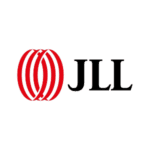 What is servitization?
What is servitization?
Its origins go back to 1988, Sandra Vandermerwe and Juan Rada presented what they termed the “servitization of business”, explaining how more and more corporations were adding value to their core corporate offerings through services. – For some well-intended temporal perspective here, this was the year before Tim Berners-Lee invented the “World Wide Web” while working at CERN and a full eleven years before Kevin Ashton coined the term “Internet of Things” during his time at Procter & Gamble. – Vandermerwe and Rada observed that companies were offering “bundles of customer-focused combinations of goods, services, support, self-service, and knowledge”, with services beginning to dominate.
The dominance of services, then, and the transformation of business models to accommodate this, is not a new phenomenon. However, servitization has since received extensive attention from both academia and industry, occasioning many a special-issue journal and conference. Where once service contracts were as literal as having an agreement for a technician to come and perform maintenance on your boiler when it broke down, both the object of servitization and the means by which it is realized have evolved significantly.
As increased digitalization disrupts the manufacturing industry, servitization could now be considered the customer-facing component of Industry 4.0. Its implementation, in turn, may rely on shifts from purchase to subscription models, to name just one possible manifestation of the transformation it entails.
A definition of servitization for today
What is servitization? Far from being a cosmetic touch-up to lure in customers in an attempt to cling onto market relevance, it becomes apparent that servitization today warrants far-reaching, deep transformation. If companies are to appeal to digital natives while being mindful of possible reluctance in the face of change, their efforts must be people-centric, striking the balance between leveraging technology and catering to tangible customer needs. Tapping into the financial resilience and opportunities for growth servitization promises in today’s market environment therefore requires service design thinking. And so we see that best practice in servitization as is now integrally linked to the holistic concepts of people-centric business transformation and service design.
An era of servitization acceleration
As you can imagine, over the past twenty to thirty years, technological innovation has opened up entirely new avenues via which to pursue people-centric transformation, providing new tools to be instrumentalized in service design. Big data, not least gathered from opportunely positioned sensors, delivers a unique opportunity to address upcoming issues before they have even materialized. This sees providers transition from a trouble-shooting, after-the-fact remedy approach to the proactive provision of uninterrupted services. Take printers ordering their own refill cartridges, for instance. On a larger scale, while real-time alerts to system failure and the automatic dispatch of qualified technicians can help mitigate the often exorbitant costs and downstream ramifications of outages on production lines, say, identifying the need for replacement parts or maintenance ahead of time could eliminate this friction altogether. In this way, the Internet of Things enables providers to add service guarantees to their products, employing a predictive approach to alleviate pain points for customers.
Business model innovation
From product-only to product-service bundles
Incorporating services in product-driven enterprises requires companies to rethink their business models. By carefully considering how they create, capture and deliver value, companies can augment their existing offerings. Bearing in mind the constant, natural cycle of product maturity, companies may find that product-service bundles offer a contemporary alternative to product-only offerings.
Offering customers a one-stop shop where they can both purchase a car and seek the relevant financing, for example, side-steps any loss of sales associated with a lack of funding. Ensuring the relevant services are provided in a timely, convenient manner adds value for the customer by eliminating unnecessary delays and the parallel admin of explaining their financing requirements to a service provider focused solely on issuing loans or leases. This comes with the elegant side-effect for garages of profiting on the financing services as well as the sale of the vehicle. This sees companies reassess where their profit pools lie and tailor their business models to tap into a greater share of potential revenues.
Business model innovation challenges
As with any far-reaching change, business model adaptations are not without their challenges. While smaller companies may be able to implement changes with relative ease by virtue of having a small team thinking along the same lines, larger companies may find this much more complicated.
Challenge number one may come as early as agreeing on what the desired outcome is. What should the new business model look like? Even once consensus is reached among management, this vision then needs to be clearly communicated to the rest of the company. At which point it may be well or less well received.
This opens the can of worms that is employee satisfaction and retention, before you’ve even considered the time- and resource-intensive pursuit of upskilling or reskilling your workforce. Will your existing staff slot into the newly emerging framework? How will you value legacy skills while also onboarding for new ones? Job cuts? Let’s hope not, but changes to daily working life are likely to ensue. Will you encounter resistance? If so, will this lead to transformation stagnation? Will those leading the way have the right set of hard and soft skills to lead in this era?
At the implementation level, the interdependencies at play within companies provide an intricately interwoven environment in which cutting one string could lead to another weaving point unravelling entirely. These issues either have to be pre-empted and mitigated or identified and managed. Seeking to realize several budding ideas for optimization, however excellent these may be in isolation, can reveal conflicting intersections or result in parallel business models potentially competing with one another within a company. Not to mention the implications of differing project horizons, with business model tweaks in the short, medium and long term vying for harmony.
There are no step-by-step instructions for company-specific servitization. Some experimentation may be required along the way. Experimentation, clearly, is the antithesis of reliability. Will your brand suffer a setback if an interim stage of your transition is not cohesive with the rest of your offerings or does not please your core customers?
From product to service centricity
Another factor to consider as regards servitization is the diverging nature of product versus service design. Product design affords somewhat greater scope for the gradual emergence of the ideal product. Product design stages need not be continuous perfection – the end result is what counts. Should it become necessary, there may be sufficient room for maneuver to delay a product launch in the interests of it hitting the market at a time when it will resonate with consumers. Coupled with the fact that a product can be bought now and consumed or used later, this means that manufacturers’ efforts on the production side are somewhat split from the use of the product by customers.
In contrast, service providers, forming part of the service themselves, are integral to the service’s success of implementation at the time of consumption. This must alter the nature of the design approach.
Where quality controls for products can ascertain 100% replication and standardization, the human factor in service provision makes this less attainable. In addition, where products can be customized to a certain degree provided the prerequisite infrastructure and/or manpower is available, the potential for personalization in services is seemingly endless. This poses unique challenges for scalability, with service providers needing to weigh personalization up against profitability.
Digitalization as part of a people-centric transformation
The temptation is real to see the plethora of technological opportunities out there and feed a selection into existing offerings as a way to servitize. However, if servitization is to be a true success, it must start with the customer. A people-centric transformation requires companies to engage with users and consider the value chain as a whole, asking:
- What do our customers need and how can we provide that?
- What touchpoints can we identify and how can we improve the customer experience?
- What problems are our customers encountering and how can we solve these?
- What do our customers like about us specifically and how can we give them more?
And lastly:
- Can any of this be done better through digitalization?
This is a clear “no” to digitalization for digitalization’s sake. “No” to tech push and “yes” to market pull. “Yes” to inverting the process, to taking care not to rely on data alone, and to seeing the bigger picture.
This means being lean and addressing trade-offs. Adopting a no-waste approach to corporate transformation and adamantly refusing to create services nobody actually wants. Maintaining a firm grip on value creation and acknowledging the certainty that your service can’t do everything for everyone. Decide what you want your company to be. Stick with what you know and stand out from the crowd by elevating your USP. Concentrate on meeting your customers’ needs, adding in features as required. No “bloatware”.
So, what is servitization? In this era it is synonymous with digital transformation. Offering customers end-to-end solutions thanks to servitization relieves them of at least some of the stress the digital world has in store. When servitization is done well, it leaves customers feeling cocooned in service provision. Comfortable with a product they can trust and happy to rely on services when they need them, sometimes even before they know they do.


















